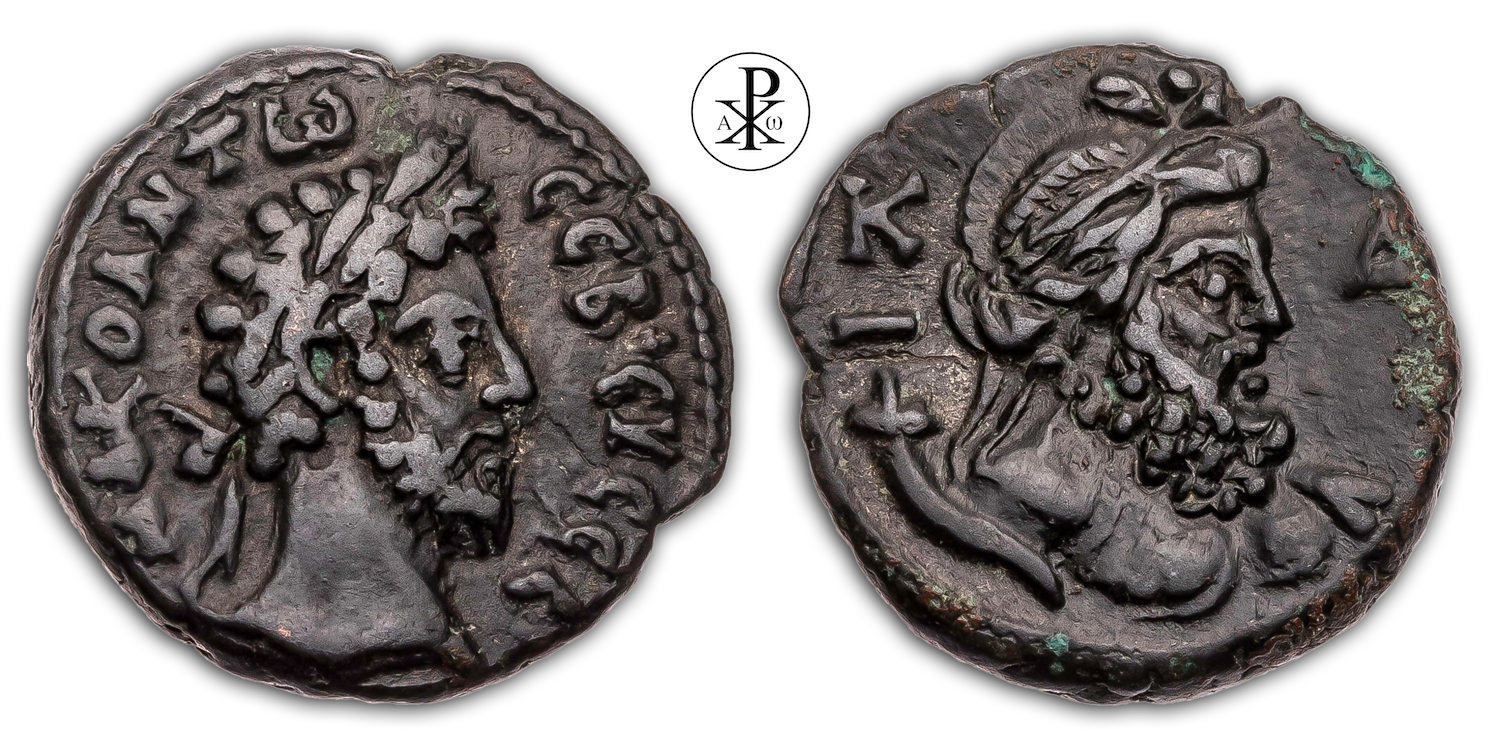Imperator Caesar Marcus Aurelius Commodus Antoninus Augustus
Reign: Commodus
Mint: Alexandria, Egypt
Date: 183/184 AD
Nominal: Tetradrachm
Material: Billon
Diameter: 26mm
Weight: 11.97g
Reference: RPC IV.4 14196
Reference: Dattari 3874
Reference: Geissen 2215
RPC Online: https://rpc.ashmus.ox.ac.uk/coins/4/14196
Rare: Specimens 31 (16 in the core collections)
Provenance: Kölner Münzkabinett, Germany
Provenance: Naville Numismatics London, Great Britain (Auction 41, Lot 268, 2018)
Provenance: Heritage Numismatics Dallas, USA (Signature Sale 3042, Lot 32195, 2015)
Pedigree: –
Obverse: Laureate head of Commodus, right
Inscription: Μ Α ΚΟ ΑΝΤⲰ ϹƐΒ ƐVϹƐΒ
Translation: Marcos Aurelios Komodos Antōninos Sebastos Eusebes
Translation: Marcus Aurelius Commodus Antoninus Augustus Pius
Reverse: Draped bust of Nilus, right, crowned with taenia and lotus-buds, cornucopia at shoulder
Inscription: L ΚΔ
Translation: ΛUΚΑΒΑϚ (λυκαβας) Kappa (20) Delta (4)
Translation: Year 24 (183/84 AD)
Comment: Alexandria was founded in 331 BC by the Macedonian Alexander the Great on the site of the ancient Egyptian settlement of Rhakotis and completed under Ptolemy II between 285 and 247 BC. The city, residence of the Ptolemies, quickly developed into one of the most important centres of the Hellenistic world and later of Roman and early Byzantine Egypt. It was the capital of the Roman province of Aegyptus after the end of the Ptolemies, then of the Dioecesis Aegypti in late antiquity. In 30 BC, the city was captured by Octavian, who had prevailed in a civil war in the Roman Empire and incorporated the city – like all of Egypt – into the Imperium Romanum. Egypt became an imperial province and was placed under the authority of a praefectus Aegypti; from then on, senators were only allowed to enter Alexandria as an exception. Vespasian stayed in the city in the year of the Four Emperors and staged himself as a miracle healer. Around 116 AD, a Jewish uprising under Emperor Trajan ushered in a temporary decline. The city was severely damaged by the unrest and trade came to a standstill. Trajan’s successor Hadrian initiated reconstruction, but limited himself to three-fifths of the old city area. Conflicts arose again under the emperors Decius and Valerian: Two severe persecutions of Christians are reported, but there were also violent riots within the faith groups of the Roman (polytheistic) religion. Ancient Alexandria was best known for its lighthouse (Pharos), one of the Seven Wonders of the Ancient World, and for its Great Library.
Neilos (Latin Nilus) is the river god of the Nile in Greek mythology, son of Okeanos and Tethys. According to legend, his daughter Memphis, after whom he named a city, married the Egyptian king Epaphos. Their joint daughter was Libya, who in turn became the mother of Belos and Agenor. Nilus is one of the coin images with the most types and variants. In the full-figure representation, he wears a himation around his hips, the lotus diadem on his head, a cornucopia and a reed in accordance with his iconography, whereby in the Severan period the cornucopia is shown in the left hand and the reed in the right. Possibly the most extensive form of representation is the reclining nilus, whose wealth of variants is unparalleled and in part can only be discerned through minor details. As a bust, Nilus wears a lotus diadem on his head and a cornucopia is on his right shoulder. This mode of representation is also known from the round sculpture and implies that the cornucopia, which he grasps at the top with his hand, is leaning against his shoulder at the top.
The calculation of the years of reign. The first year of an emperor’s reign lasts from the day of his elevation until the next Egyptian New Year’s Day, which since the introduction of the Iulian calendar in 26 BC is on the first day of the summer month of Thoth and corresponds to 29 August. This day marks the beginning of the second regnal year of the new ruler, which from then on runs parallel to the Egyptian calendar in an antedating manner. This explains how the first year of a ruler’s reign sometimes lasted only a few days or weeks, as in the case of Emperor Elagabal, who was raised on 16 May 218 AD and thus began a rather short first year of reign lasting only about three and a half months. This way of counting the years is used in Roman Egypt from Augustus to the reforms of Diocletian. Each ruler always begins with his own count. Until the end of the Severan period, this regulation was only suspended twice. Under the Antonines, Commodus took over the census of Marcus Aurelius and a few decades later Caracalla that of his father Septimius Severus. The reason for such a continuation of the years of reign, however, can almost certainly be explained by the length of the crown prince’s reign (Source: Sandra Matthies, The Iconography of Alexandrian Coin Images in the Era of the Severan Emperors).
